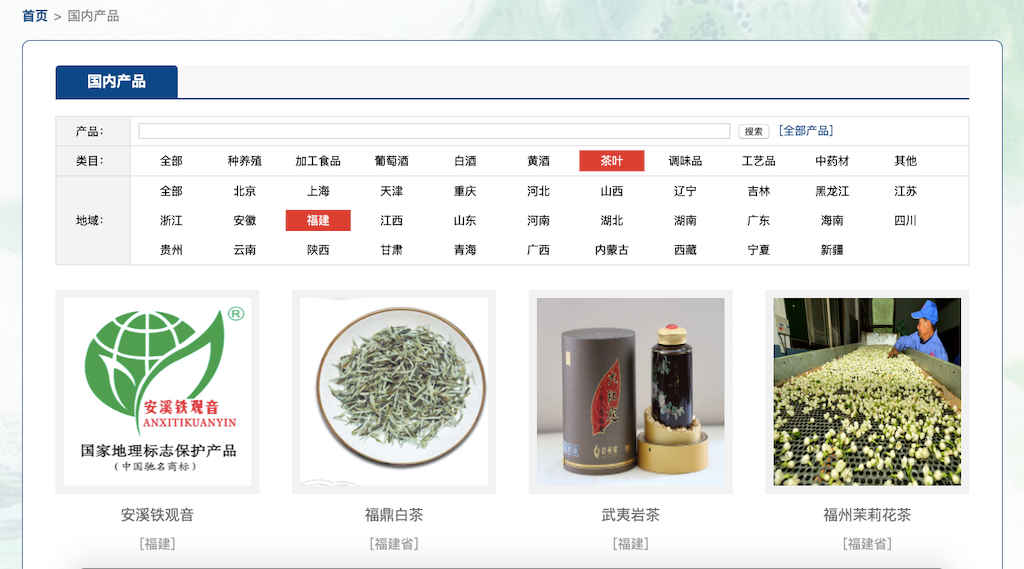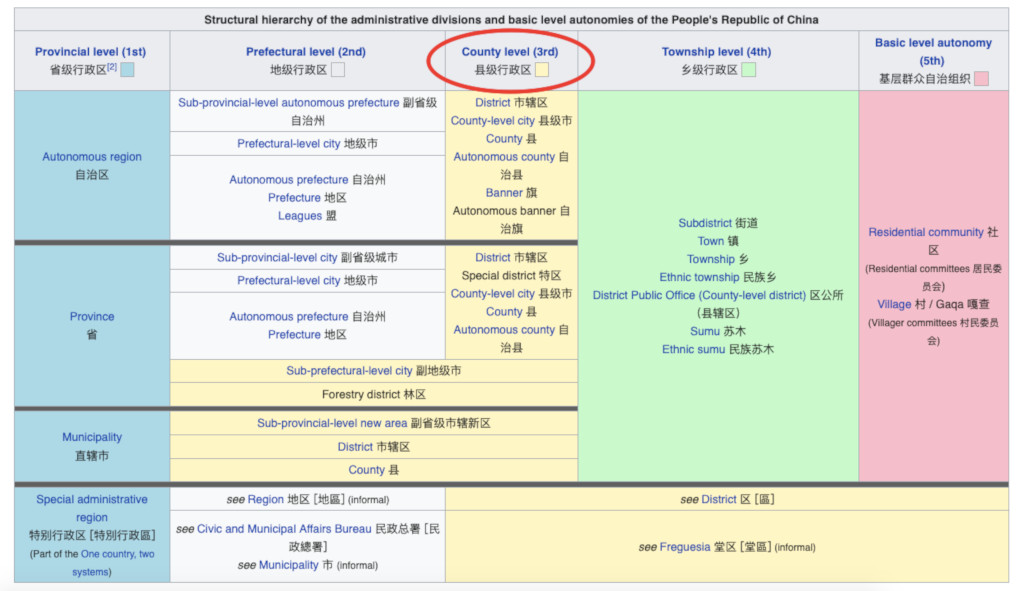Twenty years from now you will be more disappointed by the things you didn’t do than by the ones you did do. So throw off the bowlines. Sail away from the safe harbor. Catch the trade winds in your sails. Explore. Dream. Discover.
-Mark Twain
As a tea enthusiast and buyer, getting as close as possible to the source could be benefit to your business very much, four points in my head now:
- Right and solid tea information, important for tea education and promotion
- Better price
- Predictable quality
- Make one more friend
But once you head to this exciting adventure, you might find it’s a fuzzy world covered with confusing stories, you have the guts to reveal it, that’s great, let’s see what kind of strategy can help.
Know the system, get a blueprint before construction
Tea system works in China is quite different from India or Sri Lanka, in China most of the tea lands are divided into pieces and belongs to small farmers, there are four kinds of organizational forms:
- Solo farmer: that’s the most common form, especially for renowned tea, it’s precious and no one will let it go. During harvesting season they might hire workers, someone even hire tea masters to monitor and get them response for whole tea making process.
- Co-operative: farmers united and leaded by one. If one farmer is serious about business, mostly they are in. Cooperatives are encouraged and strongly supported by the government, including tax reduction and equipment subsidy etc. In China, government plays a very important role, sometimes can be a decisive element of an industry’s destiny. Co-op is the most valuable source for buyers no matter you’re just one man company or SME. Besides all these information can be obtained publicly, visit a Company Search Engine like Tian Yan Cha and enter “tea cooperative” in Chinese, POP, a huge list of names come out with contacts.
- Solo corporation: These companies have their own tea garden, no matter rents from the government or buy from other farmers, this form is rare but can be found easier in foreign-invested enterprise, especially Taiwan-invested. Good thing is the company can control everything from planting to packaging, if it works well there is a big stability of the quality. The bad is this needs a lot of funds and normally cost much higher. In order to get payback, huge sales quantity needed, so normally they will swim to a big pool where quality is not the first priority, security is, then price, then quality, it’s a fair and big business.
- Farmers plus corporation: one company tied up with some farmers, normally farmers have contract with the company to agree with how to plant the tea, how to avoid damage from insects, how to process the tea and what kind of purchasing price guaranteed. Still the tea garden belongs to the farmers and they have to take care of their garden. This form is flexible and economic, also conform to human nature. This kind of organization can be big, bigger than solo corporation, also can be small, it’s a higher form of Co-OP.
Get a tea map
When hang out sometimes I just do not want to have a destination, I want to slow the time and meet a surprise, that’s fine for holiday but for buyers especially foreign buyers, efficiency is important, and there is no other tools can compete a map.
Given a map, your itinerary can be easier and more efficient. As tea is an agricultural products, it’s very much connected to a specific location, one tea grows well here doesn’t guarantee the same good in another garden.
So where is good tea planted?
As we know tea plant likes warm and humid environment, that’s the Southern China, normally south of Chang Jiang River, or simply South of Zhejiang province, including:
- Zhejiang
- Anhui
- Hubei
- Hunan
- Fujian
- Jiangxi
- Jiangsu
- Guangdong
- Si Chuan
- Guizhou
- Guangxi
- Yunnan
The Northern China also planted some tea from 1950s, like Lao Shan green tea and Ri Zhao green tea in Shandong province, in such cold area it costs so much time and care to get survival, we can dig into this heart-broken yet inspiring history later. Let’s focus on the South.
For green & black tea, everywhere can make it. Good news is almost every famous tea has its Geographical Indication Products system protected, like West Lake Dragon Well and Anxi Iron Goddess and Wuyi Big Red Robe, so if good loose leaf specialty tea is what you are looking for, there is a governmental agency you should check - China Protected Geographical Indication Products (subsidiary of National Intellectual Property Administration) - All China’s Geo Indication Products are here, this website has filter function, like choosing Fujian Province, all 12 famous teas in Fujian showed out like below:

Has a trouble with Mandarin? Easy pie, open Google Translator and enter the URL, nothing can stop you.
There is a trick, normally teas planted close to the protected area is not bad too, if you are looking for big value instead of name, give it a try.
Join local tea exhibition
Every year when the tea harvesting is finished, almost every tea production area has one tea fair, regional one, mostly County Level, not big national wide. As distance matters really, especially for tea farmers, a lot of farmers can only speak local language not mandarin, a lot of farmers cannot afford distant fair which normally much higher costed, even very possibly no way to get that information, they are vulnerable groups in the informative age.
In order to figure out which is County Level fair, should you learn the Administrative Divisions of China, China provides for four levels:
- The Provincial
- The Prefectual
- County
- Township

If you can read Chinese, there is a map on website of Minister of Civil Affairs of PRC, here you can zoom in and out, click one division it will show you the sub level divisions.
Thinking about creating a functional digital tea map, each region has tea introductions, market insights, local culture and contacts of renown tea farmers, tea factories, tea educators etc, and importantly update the information annually, a crowdfunding?
Dip a toe in the Chinese culture
Show respect, be humble. Might you have ever heard of this word - MianZi - or face translated in English, it’s important here no matter in business or daily life. Lin Yutang, this famous Chinese writer considered the psychology of “face”:
Interesting as the Chinese physiological face is, the psychological face makes a still more fascinating study. It is not a face that can be washed or shaved, but a face that can be “granted” and “lost” and “fought for” and “presented as a gift”. Here we arrive at the most curious point of Chinese social psychology. Abstract and intangible, it is yet the most delicate standard by which Chinese social intercourse is regulated.
Lin Yutang wrote a book in 1935, My Country and My People, Reynal & Hitchcock, Inc., (A John Day Book), although it’s published long time ago, still you can learn a lot of the Chinese from it. It’s a work written in English, I strongly recommend you take a look.
Disrespect for local culture sometimes can cause some misunderstandings or even a war. In 1941 a tea buyer named Yang Anyuan came to Xi Shuang Ban Na, Yunnan and did some disrespectful behaviors to local people of Youle Moutain, thus started a war lasted for two years, human died, home destroyed, over thousand acres of tea gardens were burned.
Yet there are some tips can help you make a successful relationship:
- Pay the sample. Not every tea deserves your bucks but once you meet the one you like, make a proposal that you would like to pay the sample like 50 grams, it’s not much money to both parties but can send a strong message that there is a respect for the hard work of the tea. If the producer insists its free as a gift, then could be comfortable for acceptance. So even you don’t make an official order later, no one would misunderstand why you are here, you will have a healthy relationship with each other and have a welcome to come back.
- Prepare a gift. No word can beat a small gift, it’s the easiest way to say thanks if you do not know how to do it. The gift must be not expensive, so could be comfortable for your host to accept it. It doesn’t matter a note book, a pen or even snacks, as long as they have your native characters on it, people love gift from far distance.
- Speak two words. “Ni Hao” and “Xie Xie”, that’s hello and thanks, in Mandarin will be enough, don’t need to be local language. These are two magical words, once on show, smile comes, it shorten the gap between guest and host very much.
- Accept meal invitation. There is one fold adages in China, “Depend on parents at home, rely on friends outside”. Let’s skip the first part, the other part about friend is very popular, you could say Chinese people are very enthusiastic, it’s quite possible people will suggest you have a meal together. That’s very common in country side, in tea mountain, in tea farmer’s house, when it’s at mealtime, accept it, that means you accept your host. Eating is very important in China, at the dining table, there is no foreigner, only friends.
- Stay tuned with WeChat. “WeChat” is an instant messaging app similar to WhatsApp, it’s very popular, even such people don’t know how to use Smart Mobile know how to play WeChat, it’s the No. 1 option to get connected in China. One thing you might find that email is not popular here, especially for tea producers, to them, email is kind of an alien. You better call or WeChat, besides WeChat has an awesome feature, it can make translation automatically, thus no language barrier at all.
- Show your talent in the right time. People respect real tea man very much, once you show them how much you know about tea in the right time, you will become one of them, not just a friend. The timing matters, as most of producers got proud of their crafts and will share a lot with you, when this is finished, when there is a cupping, do tell them your opinions, expert deserves respect.
To be continued …